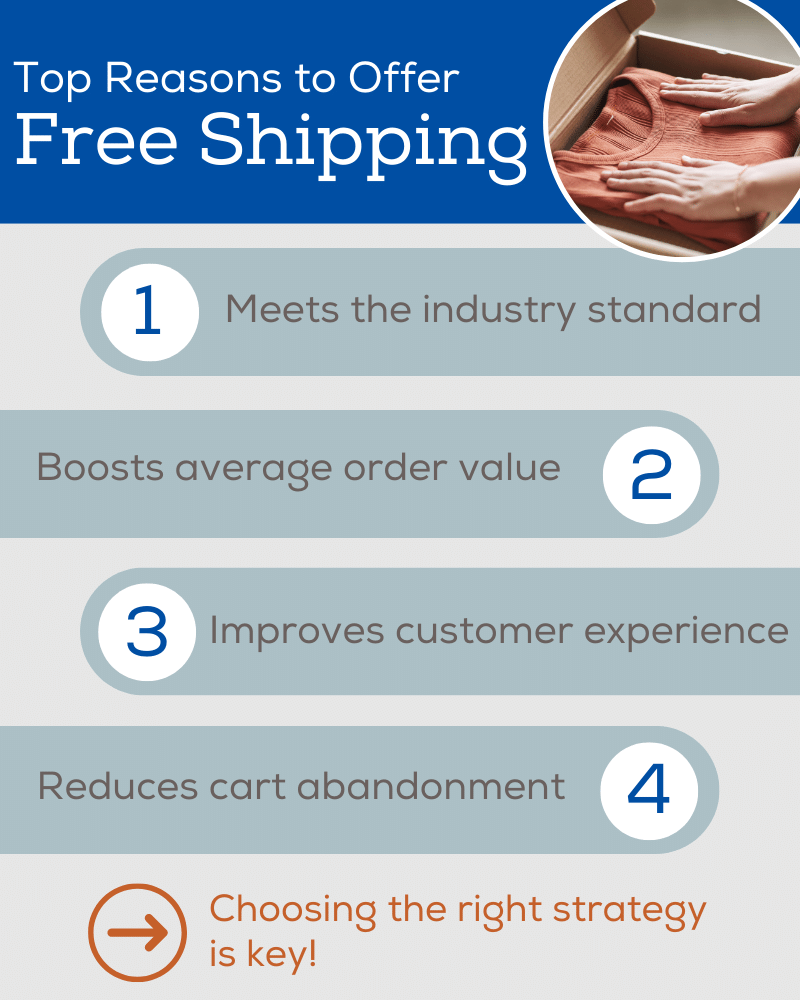
As a consumer, the words “free shipping” can create a huge incentive that pushes you to purchase. The expectation for most shoppers is that there will be some sort of free option. However, many retailers are still hesitant to offer free shipping, or stuck on how to make the choice available to consumers while still protecting their bottom line. Let’s take a look at the three most common misconceptions about offering free shipping, and how you can implement strategies to make it work to your business’s advantage.
Misconception #1 – Absorbing shipping costs will cut into my bottom line
If we’re really being honest here, it’s important to note that free shipping isn’t really “free”. Transportation services require time and effort from the carrier, so someone has to pay for it. If it’s not your customer, then it will have to be you. If not addressed correctly, you will have to absorb costs, and this will decrease your margins, overall.
The good news is that offering free shipping to your customer can have a major positive impact on your sales because it’s viewed as a huge value-add. In fact, most consumers are willing to spend up to 30% more online if they know they won’t be paying for shipping. As a top incentive, a further 93% of shoppers say they will take action to qualify for free shipping by adding more items to their order. By offering free shipping, you are going to boost sales and increase your average order spend. In time, the increase in revenue will ideally offset your shipping costs.
Pro tip: Set a minimum amount threshold to qualify for free shipping.
To make free shipping a viable strategy, it’s probably not smart to offer the service on just any order that is placed. Because shipping costs fluctuate, it can be hard to predict consistently. By setting a minimum order amount, you’ll help ensure that the revenue from the sale will offset the costs of transportation. Determine your minimum order value in advance, and be strategic about communicating that minimum amount during every step of checkout.
Misconception #2 – Building shipping cost into product price will scare customers

To counter the cost of shipping, it may make sense to increase your product price. But this can sound like a scary notion. Raised prices turn off customers and decreases your competitive advantage, right? The truth is, by increasing prices even minimally, while offering a high-value service like free shipping, you will see a boost to your net margin. 49% of all cart abandonment occurs due to sticker shock at the shipping point of checkout, not due to product price. Moderate price increases are generally justified by the customer, as long as fulfillment expectations are being met.
Pro tip: Product pricing should match what your customers are willing to spend and the type of customer you are trying to attract.
When building shipping costs into the price of your products, it’s always important to keep in mind who your target consumer base is. For example, a premium, brand-name shoe retailer can get away with a higher minimum price point than a book seller. Adding the cost of shipping into product price is a legitimate tactic that ensures you're covering your bases, just keep your price points fair and realistic.
Misconception #3 – The demand for free shipping isn’t there for my business
Unless you’ve been living under a rock, you know that free shipping has pretty much become the industry standard. Thanks to large ecommerce companies like Amazon, consumers expect shipping to be fast, free, or a combination of both. No matter whether you’re selling t-shirts or toolkits, the demand for free shipping is there for any industry. In fact, 66% of consumers want free shipping on all orders, regardless of the total, and 88% expect it when their order exceeds a certain amount. Even more alarming, 61% of shoppers say they are “somewhat likely” to cancel their order if free shipping isn’t offered – that’s a big old ‘yikes’. In short, when the majority of your consumer base expects some type of free shipping, it’s time to stop stalling and decide how to offer the service instead.
Pro tip: Explore ways to “test out” free shipping with offers and promotions.
You don’t have to jump right into a committed strategy right off the rip – dipping your toes in can help determine which tactics work best for you. Consider offering new customers, or rewarding existing ones, with a free shipping promotion. Implement VIP or loyalty programs that allow your customers to sign up and receive free shipping as an incentive. You may even benefit from offering free shipping on select items (perhaps those with a higher price point). By testing out different methods, you can really look at the shipping costs you incur, what your minimum order threshold should be, and refine your strategy from there.
Discounted shipping options help you and your customers
No matter which tactic you decide is best when offering free shipping to your customers, it’s extra important to keep your shipping costs low. You might not know that there are often shipping discounts available through memberships within trade associations, chambers, and industry groups. PartnerShip works with over 130 groups to provide their members with discounts on FedEx services. Contact our team to find out if you qualify.
